DIY Cannabis-Based Soap
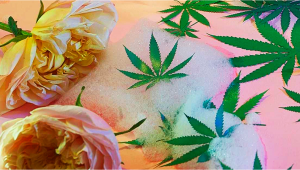
- 1. But first... what are cannabis topicals?
- 1. a. Cbd soap vs other cbd products
- 1. b. How to choose cannabis soap
- 2. Why cannabis soap though?
- 2. a. Treating skin conditions with weed topicals
- 2. b. Cannabis soap for pain relief and relaxation
- 2. c. Moisturizing the skin with weed soap
- 3. How to make canna-soap
- 3. a. Necessary tools and ingredients to make weed soap
- 3. b. Step 1: cutting and melting the brick soap
- 3. c. Step 2: adding the oils and coloring
- 3. d. Step 3
- 4. The bottom line
If you're part of the stoner percentage that likes learning all about cannabis seeds growing and its different forms of consumption, then you most likely know that in terms of shapes and forms, weed can be used in uncountable ways. Either for recreational or medical purposes, weed is quite a versatile compound, it can be adapted to many different forms, suitable for each and everyone's personal taste and necessities. For instance, those who seek a strictly medical use of the plant and who might rather skip the psychoactive effects may find what they need in topical forms of weed. In the topicals category itself, the options are so wide that you'll most likely have to test out a few until you find the one that suits you best. And the best part about topicals is that you can even make them by yourself at home, it's quite easy.
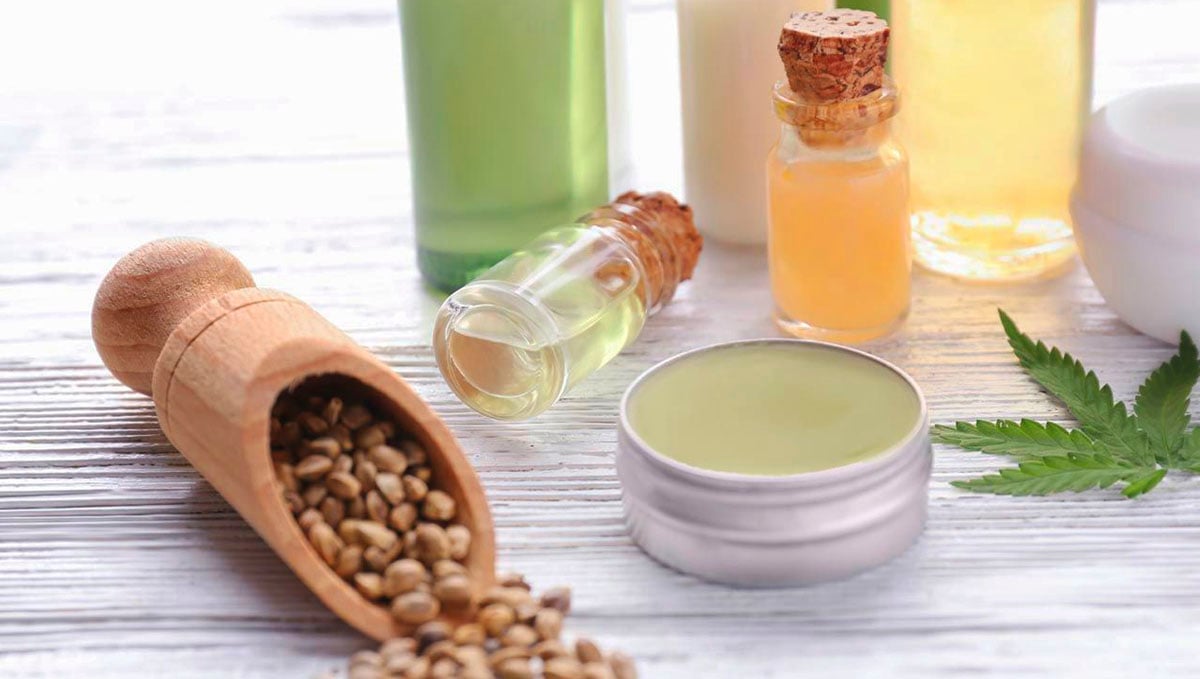
From bath bombs, balms, lotions, and even lipstick, you can do all sorts of cannabis topicals at home. If you're one of those people who like DIY crafts then check out this canna-soap recipe.
1. But First... What Are Cannabis Topicals?
Before we get into the details on how to make your own weed-infused soap topical, perhaps we should explain what the term topical means. Marijuana-based topicals include all of the weed-infused products that are applied to the skin, with the exception of transdermals (which we'll explain further on). These topicals are mainly active on the top layer of our skin, the epidermis, and the surrounding areas.
This precisely is the main difference between topicals and transdermals, while the firsts only work on the area applied, meaning they don't enter our bloodstream, transdermals actually do, providing a more general effect on the body and maybe even psychoactive too.
CBD Soap vs Other CBD Products
It’s extremely easy to use cannabis soap because you use it just like regular soap or you can also let it soak in your bathtub to make some cannabis-infused soapy water. Comparing it to other cannabis-infused products such as edibles or tinctures, cannabis soaps and topicals are much more efficient as they are absorbed fast and don’t take that long for you to feel the effects but when talking about infused soaps, you need to make sure to buy or make good quality soaps.
Low-quality soaps may not be as effective as topicals but good quality soaps can have great benefits as, in combination with other therapeutic ingredients, can have great results for your skin. The majority of the soaps in the market also contain many herbal oils and extracts that can not only defoliate but also detoxify your skiing, penetrating pores and deeply relaxing your whole body.
How to Choose Cannabis Soap
The right cannabis soap can vary from person to person but it doesn’t matter if you’re buying or making your own soap, there are a couple of things to keep in mind, such as:
- Make sure to go for full-spectrum soaps as they will contain all cannabinoids found in cannabis
- Ensure you’re not allergic to any of the ingredients in the soap
- Read the label to know exactly how many milligrams of CBD and/or THC the soap contains
- If you don’t want to feel any psychoactive effects, make sure the soap only contains CBD
- Before using the soap, try it in a small area to make sure the ingredients don’t irritate your skin
Once you know what you want and don’t want your cannabis soap to have, you should have an idea of what to look for. And always remember, do not leave cannabis products laying around as not everyone will know it contains cannabinoids, using cannabis products unknowingly can cause serious issues so keep them safe and stored away!
2. Why Cannabis Soap Though?
If you're sitting there wondering why would anyone want to use cannabis soap, then allow us to explain. It's not just that we love the smell of green and tasty marijuana, but weed soap can also provide several benefits such as:
- Pain relief;
- Soothe the symptoms of some skin conditions;
- Provide deep body relaxation and ease muscles pain;
- Can ease acne, and more.
Using cannabis soap allows users to incorporate the herb into their lives in new and effective ways. While smoking and eating cannabis introduces molecules such as THC and CBD into the bloodstream, topical offers an alternative route. Applying these chemicals directly to the skin provides a method of administration that ultimately targets the endocannabinoid system within the second-largest organ of the body. Let's learn what canna-topicals can be good for.
Treating Skin Conditions With Weed Topicals
Since we're talking about topicals, meaning they only act on the skin, it makes sense to figure that they can actually promote healthier skin conditions. These marijuana-infused topicals can be extra helpful for people dealing with skin disorders such as psoriasis. 1 At the same time, cannabis is a strong antiseptic as well, therefore you can get the aid of this magic plant and its compounds to treat any skin injuries and keep them clean. Even more, weed's anti-inflammatory properties can also help reduce swelling and bruises to ease these injuries.
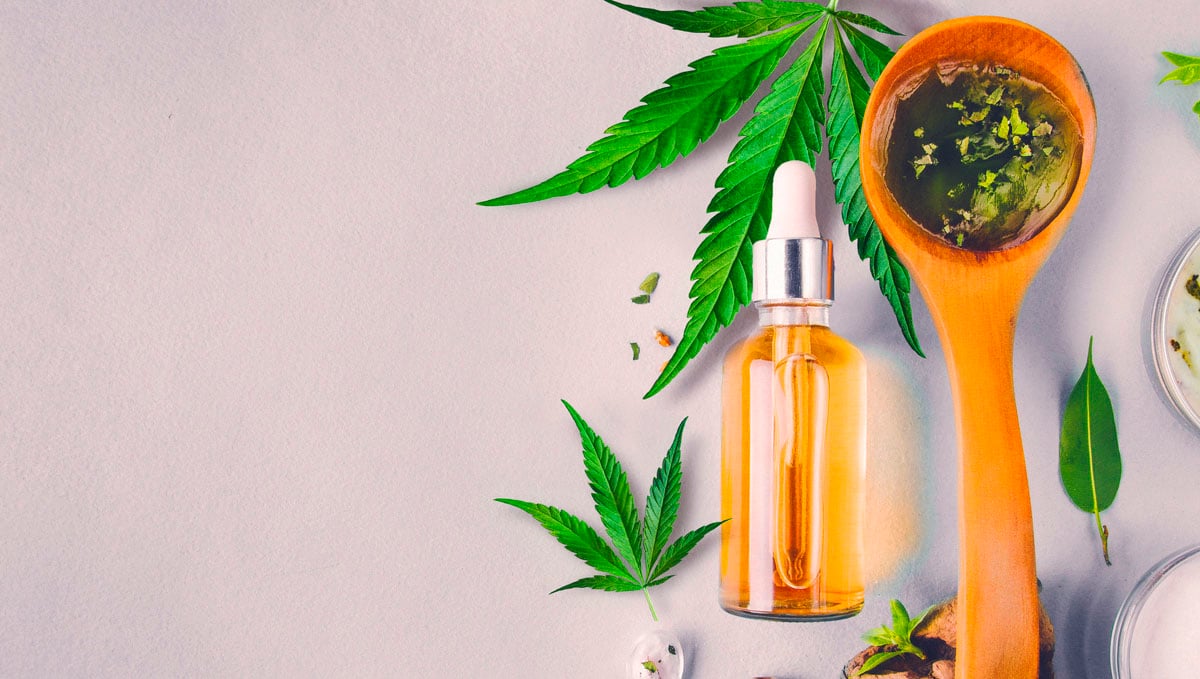
Lastly, since marijuana has antibacterial effects, you can use topicals such as canna-soap to get rid of acne and skin impurities. This is attributed to two different qualities of cannabis: first, its antibacterial and anti-inflammatory activity, and second, CBD can reduce the production of sebum in sebaceous tissues, which is what most acne treatments aim for. But cannabis-based topicals don’t just work in the standard way as other skincare and cosmetic products. Past merely moisturizing and soothing the skin, they work in a very specific manner that makes cannabis so unique and effective.
To get to grips with their mechanism of action, you need to learn about the endocannabinoid system, a network known more simply as the ECS. Also called the universal regulator of the human body, the ECS helps to maintain homeostasis—the goldilocks zone of physiological operations. This system is present in every other bodily system and tissue, including the skin. Here, it helps to keep cells regulated and skin functioning as it should. Fascinatingly, molecules from cannabis, including THC and CBD, are able to modulate this important system. Therefore, they have an important effect on skin health and function.
Cannabis Soap for Pain Relief and Relaxation
Another great use of cannabis-based bath soap is for pain relief. At this stage, chances are we're all familiar with the pain-relieving properties of marijuana, it's one of the most acclaimed benefits of using the plant for medical purposes. 2 Therefore, if you're looking to get pain relief especially on your body and muscles, definitely give weed soap a try. Furthermore, cannabis can provide extremely soothing effects, so taking an immersion bath with some cannabis soap, and why not some weed bath salts as well, will leave you feeling fresh like a baby. 3
Who knows, perhaps taking a relaxing bath or shower with some mary jane-infused soap is all you need to get rid of all that stress or anxiety that's been stuck on your head. In fact, weed is also normally prescribed to treat depression, and this combination of cannabis and self-care may actually be the solution you seek.
Moisturizing The Skin With Weed Soap
If you don't have the necessity to use cannabis topicals, either for treating any skin disorders or relieve any pain, perhaps you'd be interested to know that these topicals provide great moisturizing effects too.
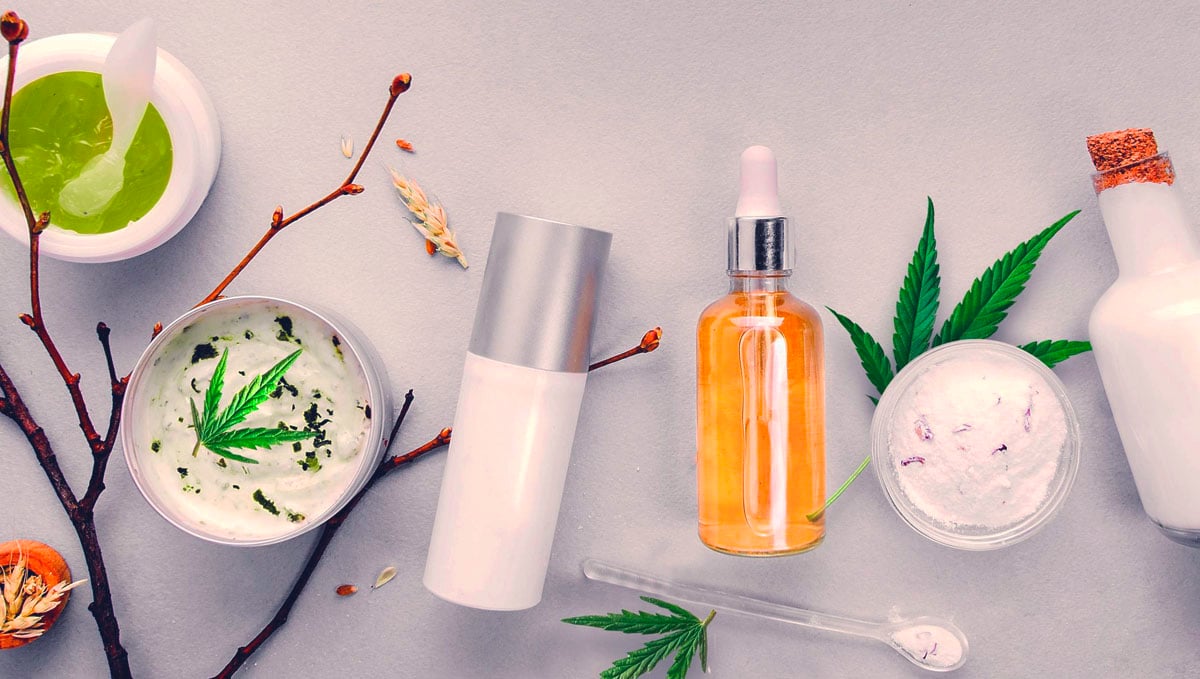
We've exhausted how amazing marijuana can be, so no wonder that its natural properties and components can also help to hydrate the skin and may even prevent it from aging too. If you're looking to stop your skin from peeling or prevent rough patches and cracks, topicals may be the answer.
3. How To Make Canna-Soap
Okay, enough with the facts now, canna topicals: convinced. So now let's get into what we came for, how to make soap with cannabis.
Necessary Tools and Ingredients To Make Weed Soap
Before you get your hands on the job, make sure you count with all the necessary elements. In order to make your own soap from cannabis you'll need to gather the following tools and ingredients:
- 1 kg brick or glycerin soap base;
- A microwave-safe container;
- 1 bottle of any essential oil you prefer;
- 1 bottle of soap coloring or mica powder;
- 1 bottle of cannabis tincture or cannabis coconut oil;
- And soap molds, ideally silicone since it works best.
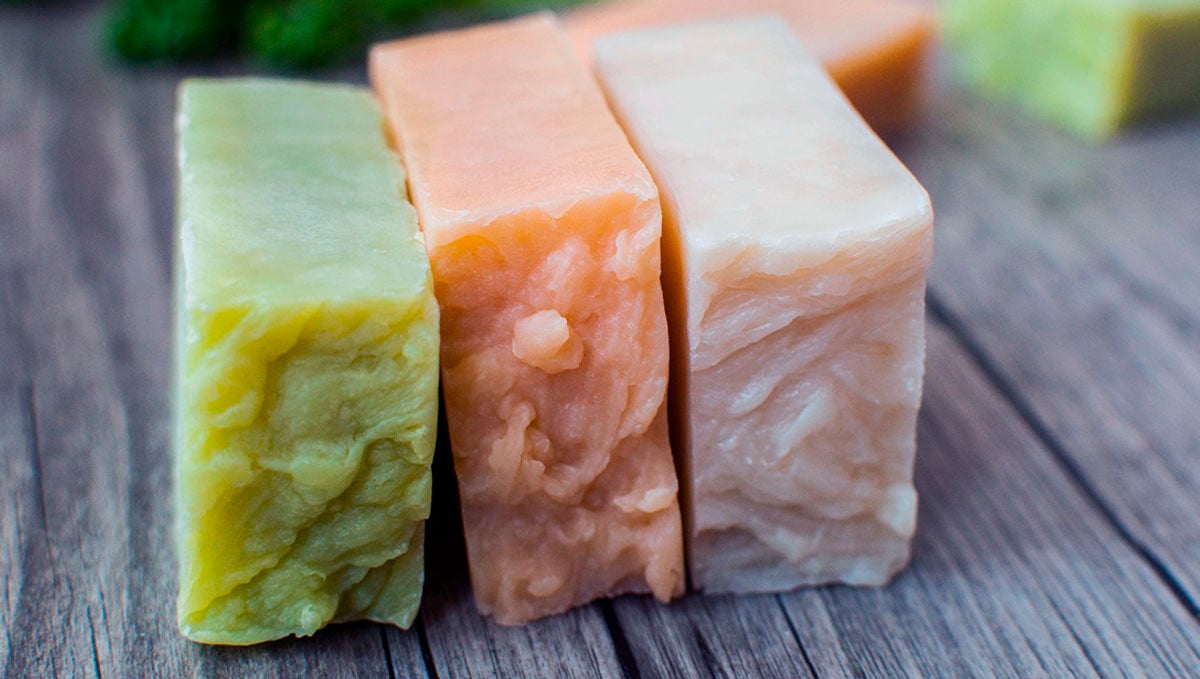
Now that you're ready it's time to work on the making of your weed soap, don't worry it's quite easy and takes no time to do. It should take you about 15 minutes to make the process and another 45 minutes to one hour for the soap to be done and solid.
Step 1: Cutting And Melting The Brick Soap
The first step towards making your own cannabis-infused wash is cutting the brick soap base into smaller pieces and placing them into the microwave-friendly container. Then, slide the bowl into your microwave and heat it over 30-second intervals, checking that you don't overheat it until you've achieved a 100% liquid consistency. Another way of doing this with a saucepan over the stove on low heat, but it's up to you since this doesn't really affect the final product.
Step 2: Adding The Oils and Coloring
Once you have the melted liquid soap, add in any essential oils of preference as well as the soap coloring you'd like, though coloring is optional since it doesn't really change much.
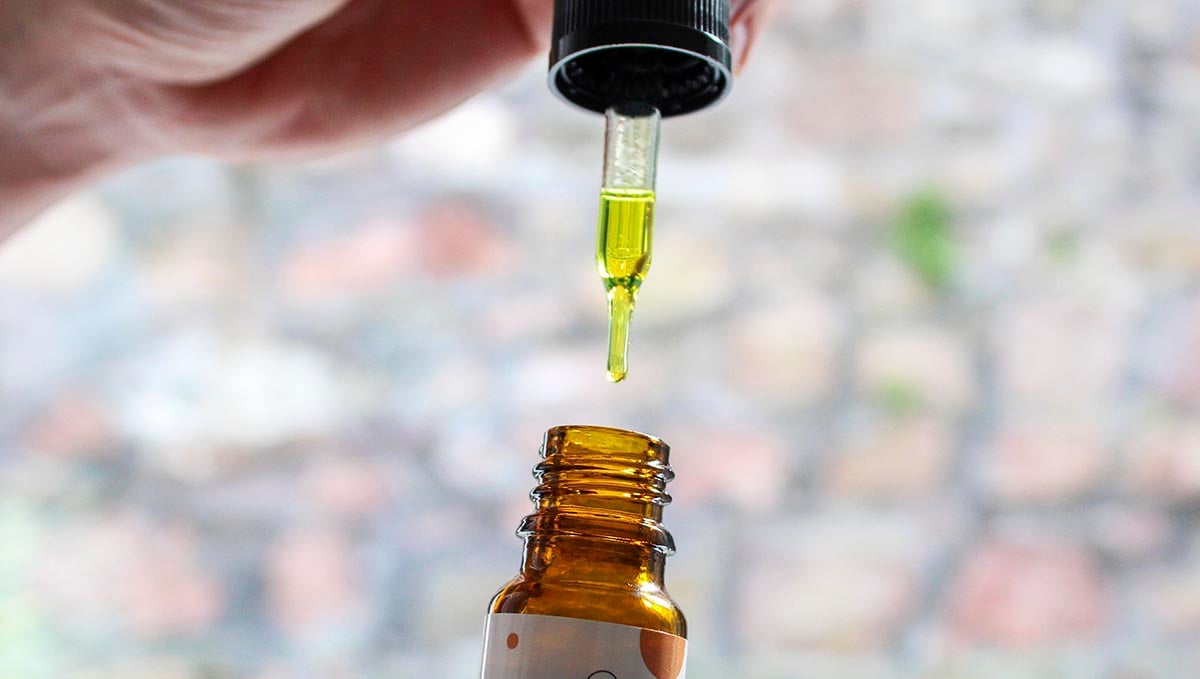
If you're going for a deeply soothing soap then definitely go for chamomile or lavender essential oil. Lavender is rich in linalool, a terpene famous for its sedative properties.
SuggestionWhy not pour in some solid herbs, seeds and flower petals to the mix to add an extra texture to your homemade cannabis soap.
Up next you'll need to add up the cannabis into your cannabis soap. How much you use is up to you really, but we suggest 10 to 15 drops of cannabis tinctures or marijuana oil. If you don't know how to make cannabis tinctures check out the following article:
You can either use tinctures or coconut cannabis oil, which you can make following this cannabutter recipe, but using coconut oil instead of butter. Stir well until you achieve a homogenous mix.
Step 3
Now that the mix has blended properly, all there is to do is pour it into molds, if it's silicone better since it'll be easier to unmold later on. Lastly, let your soap harden for 45 minutes to 1 hour, remove it from its mold and try it out!
4. The Bottom Line
Who would have known making your own weed-infused products would be so easy? We know, we're all hyped and want to make everything cannabis-based now too, could we make shampoo or conditioner as well? Guess we'll need to give that a try in a near future. Not only this way we know exactly what's inside the products we use, but we also alternate the recipe however we wish in order to make our special and unique products. Don't stay inside the box, our recipe is only a suggestion, feel free to modify it to create your own brand. We hope you enjoy the benefits of weed topicals in these canna-soaps and don't forget to send us photos of your final products!
EXTERNAL REFERENCES
- "Positive Effect of Cannabis sativa L. Herb Extracts on Skin Cells and Assessment of Cannabinoid-Based Hydrogels Properties" Martyna Zagórska-Dziok, Tomasz Bujak, Aleksandra Ziemlewska, and Zofia Nizioł-Łukaszewska. February 2021.
- "Patient-Reported Symptom Relief Following Medical Cannabis Consumption" Sarah S. Stith, Jacob M. Vigil, Franco Brockelman, Keenan Keeling, and Branden Hall. August 2018.
- "A positive association between anxiety disorders and cannabis use or cannabis use disorders in the general population- a meta-analysis of 31 studies" Karina Karolina Kedzior and Lisa Tabata Laeber. May 2014.








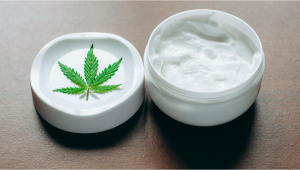

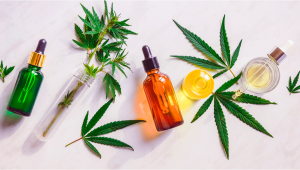


Comments